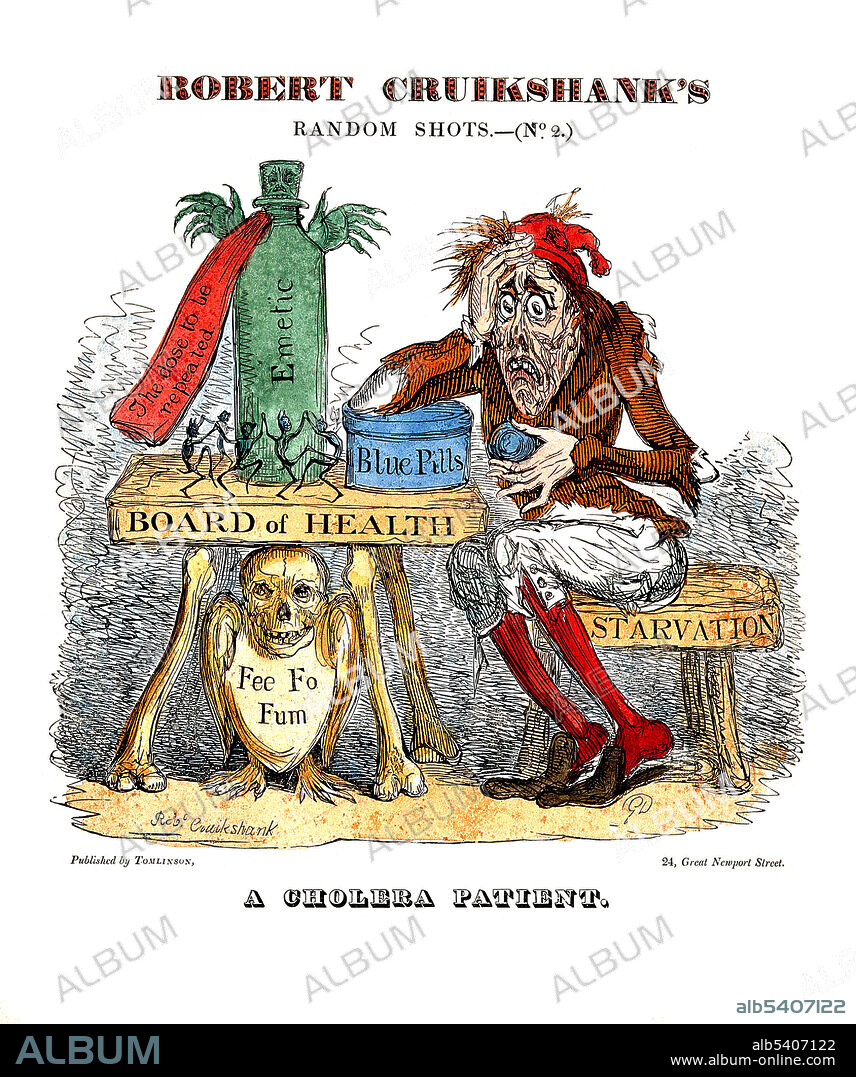alb5407122
Second Cholera Pandemic, Cholera Remedies,1832

|
Añadir a otro lightbox |
|
Añadir a otro lightbox |



¿Ya tienes cuenta? Iniciar sesión
¿No tienes cuenta? Regístrate
Compra esta imagen

Título:
Second Cholera Pandemic, Cholera Remedies,1832
Descripción:
Ver traducción automática
A cholera patient experimenting with remedies. Colored etching by Robert Cruikshank, 1832. The second cholera pandemic (1829-1851) reached London and Paris in 1831. In London, the disease claimed 6,536 victims and came to be known as "King Cholera". Although much is known about the mechanisms behind the spread of cholera, this has not led to a full understanding of what makes cholera outbreaks happen some places and not others. Lack of treatment of human feces and lack of treatment of drinking water greatly facilitate its spread. Bodies of water have been found to serve as a reservoir, and seafood shipped long distances can spread the disease.
Crédito:
Album / Science Source / Wellcome Images
Autorizaciones:
Modelo: No - Propiedad: No
¿Preguntas relacionadas con los derechos?
¿Preguntas relacionadas con los derechos?
Tamaño imagen:
3448 x 4125 px | 40.7 MB
Tamaño impresión:
29.2 x 34.9 cm | 11.5 x 13.7 in (300 dpi)
Palabras clave:
1832 • ARTE • CARICATURA • EPIDEMIOLOGÍA • FAMOSA • FAMOSO • GRABADO • HISTORIA • HOMBRE • INANICION • MASCULINO • PACIENTE • REMEDIO • REMEDIOS • RETRATO DE HOMBRE • SANIDAD PUBLICA • SATIRA • SIGLO XIX • VOMITIVO
 Pinterest
Pinterest Twitter
Twitter Facebook
Facebook Copiar enlace
Copiar enlace Email
Email
